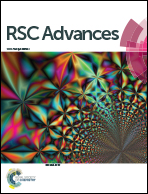Oxygen-octahedral distortion and electronic correlation induced semiconductor gaps in ferrimagnetic double perovskite Ca2MReO6 (M = Cr, Fe)
Abstract
Motivated by experimental nonmetallic features and high magnetic Curie temperatures of 360 and 522 K in double perovskite Ca2CrReO6 and Ca2FeReO6, we systematically investigate the structural, electronic, and magnetic properties of Ca2MReO6 (M = Cr, Fe) by combining the modified Becke–Johnson (mBJ) exchange potential with usual generalized gradient approximation (GGA). Our full optimization leads to stable ground-state structures with monoclinic symmetry (P21/n) consistent with experiment. The mBJ calculation successfully produces ferrimagnetic phase with semiconductor gaps of 0.38 eV and 0.05 eV, respectively, in contrast with wrong metallic phases from GGA calculations. With the spin–orbit coupling (SOC) taken into account, the Ca2MReO6 (M = Cr, Fe) shows high magneto-crystalline anisotropy (MCA) with the magnetic easy axis along the [010] direction. Although reducing to 0.31 and 0.03 eV, the semiconductor gaps remain open in spite of the SOC broadening of the Re t2g bands. Therefore, our DFT investigation has established the correct ferrimagnetic semiconductor ground states for the double perovskite Ca2MReO6 (M = Cr, Fe) materials. Our analysis shows that the semiconductor gaps are due to orbital-selective splitting on Re t2g bands in the minority-spin channel, originated from the O-octahedral distortion and Coulomb correlation effect. This mechanism, different from that in other double perovskite materials such as Sr2CrOsO6, Ca2CrOsO6 and Sr2FeOsO6, can be useful to fully understand chemical and physical properties of double perovskite compounds.


 Please wait while we load your content...
Please wait while we load your content...